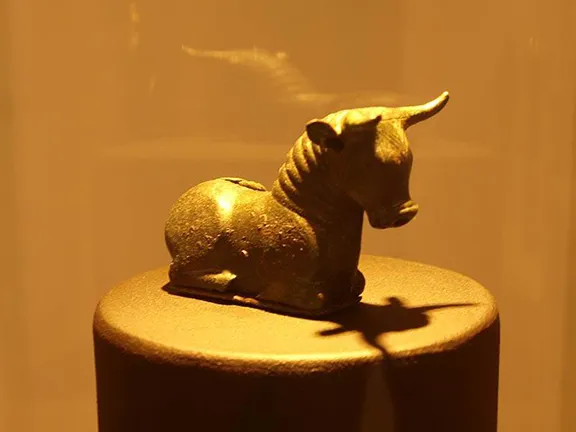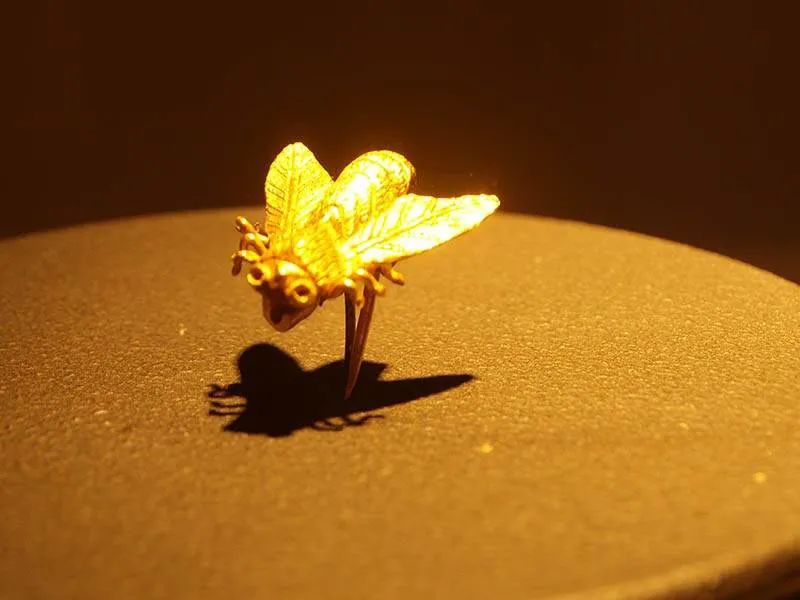Cádiz Archaeological Museum concentrates on the Phoenician, Tartessian and Roman periods in Andalucia
By Nick Nutter | Updated 12 Mar 2022 | Cádiz | Museums |
Login to add to YOUR Favourites or Read Later


Sarcophagus
Recently refurbished, Cadiz museum is situated in the heart of the old city. Its most famous exhibit is the Phoenician male sarcophagus which was found in 1887 on the site of the Cadiz shipyards. It dates back to 450 – 400 BC. His companion, a female sarcophagus exhibits features seen on sarcophagi from about 470 BC. She, despite being apparently older, appears in pristine condition, whilst he believably, shows signs of age. Despite being the oldest city in Europe, the museum is very parochial. It concentrates on the Phoenician Tartessian and Roman periods with its Phoenician collection being particularly impressive.
Cadiz had the Phoenician status of Emporium and traders from Cadiz brought goods to Cadiz from all parts of the Mediterranean and in return exported local products throughout the known world including to the empires of Rome, Egypt and those forever changing in the Middle East. In the museum you will see a collection of 6th – 5th Century BC amulets from Egypt, found at Punta de la Vaca. These would probably be prestige goods, gifts to local tribal leaders; during this period, Tartessian, to guarantee continued cooperation and trade. Pretty much the same ethos as that employed during the 19th Century BC throughout the British Empire.
The Romans were almost as experienced traders as the Phoenicians, the difference being that Romans tended to send goods back to Rome rather than act as middlemen for other empires. Prized local produce included garum, a salty fish sauce, wine and olives. These were packed into amphorae, some of which were manufactured at Malaga, that were loaded into trading vessels in the harbour at Cadiz that then sailed to Rome. The museum has a decent collection of Roman amphorae.


Tartessian Jug
By the 7th Century BC the Tartessians were manufacturing their own high quality goods including this bronze jug, found in a grave at Huelva, displaying design features inspired by the eastern Mediterranean but retaining their own individualistic style. The Tartessians clearly did not consider themselves totally under the spell of the classical world.


Terracota Busts
Some two hundred years later the Greeks were becoming more influential and the design of these five terracotta busts, all found in one spot in Cadiz, show that. The busts are household deities and possibly originate in Sicily.


Trajan at Baelo Claudia
Its Roman artifacts are from all over the province including the excavated town of Baelo Claudia situated just down the coast at Bolonia. The original statue of Trajan found in the basilica there is now at the museum.


Bull found at Carteia
This bronze sculpture of a bull was found at the Roman site of Carteia near San Roque.


Bull found at Carteia
The museum also houses a very good collection of glassware, jewellery, ceramics and statuary from the Phoenician and Roman periods. Many of these Phoenician votive offerings were found at the site of the Temple of Melqart which is on an island called Sancti Petri just south of the city. The island was once joined to the mainland. This fly amulet is an intricate piece that demonstrates the skilled workmanship of its creator.